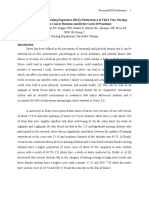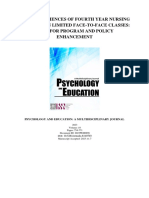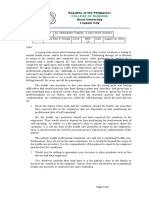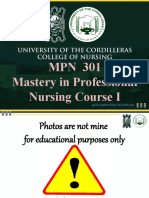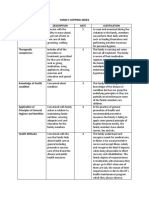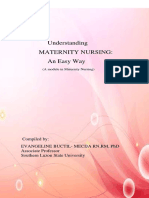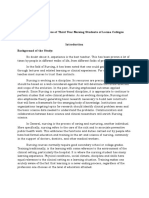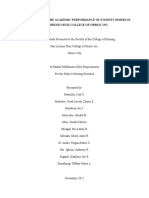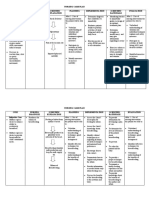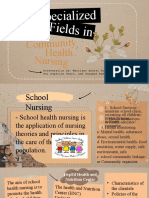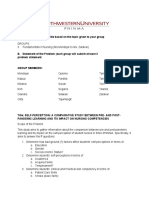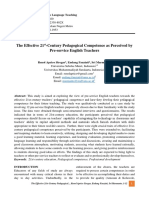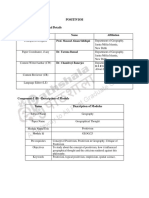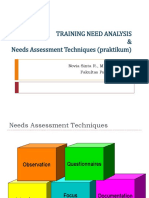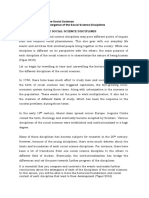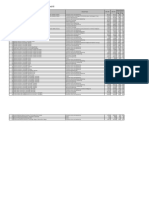0% found this document useful (0 votes)
1K views27 pagesNursing Virtual Return Demonstration Affecting Capitol University Students: A Phenomenological Study
This document summarizes a phenomenological study on the effects of virtual return demonstrations on nursing students at Capitol University during the COVID-19 pandemic. The pandemic forced schools to transition to remote learning, suspending face-to-face classes and clinical experiences. This created challenges for nursing education, as return demonstrations are essential for students to learn clinical skills. The study aims to understand students' experiences with virtual return demonstrations and their expectations for nursing education amid changes brought by the pandemic. It focuses on students' perceptions and the meaning of virtual return demonstrations for their learning. The findings could help improve nursing education delivery and clinical training strategies.
Uploaded by
Jeffrey TVCopyright
© © All Rights Reserved
We take content rights seriously. If you suspect this is your content, claim it here.
Available Formats
Download as DOCX, PDF, TXT or read online on Scribd
0% found this document useful (0 votes)
1K views27 pagesNursing Virtual Return Demonstration Affecting Capitol University Students: A Phenomenological Study
This document summarizes a phenomenological study on the effects of virtual return demonstrations on nursing students at Capitol University during the COVID-19 pandemic. The pandemic forced schools to transition to remote learning, suspending face-to-face classes and clinical experiences. This created challenges for nursing education, as return demonstrations are essential for students to learn clinical skills. The study aims to understand students' experiences with virtual return demonstrations and their expectations for nursing education amid changes brought by the pandemic. It focuses on students' perceptions and the meaning of virtual return demonstrations for their learning. The findings could help improve nursing education delivery and clinical training strategies.
Uploaded by
Jeffrey TVCopyright
© © All Rights Reserved
We take content rights seriously. If you suspect this is your content, claim it here.
Available Formats
Download as DOCX, PDF, TXT or read online on Scribd
/ 27
